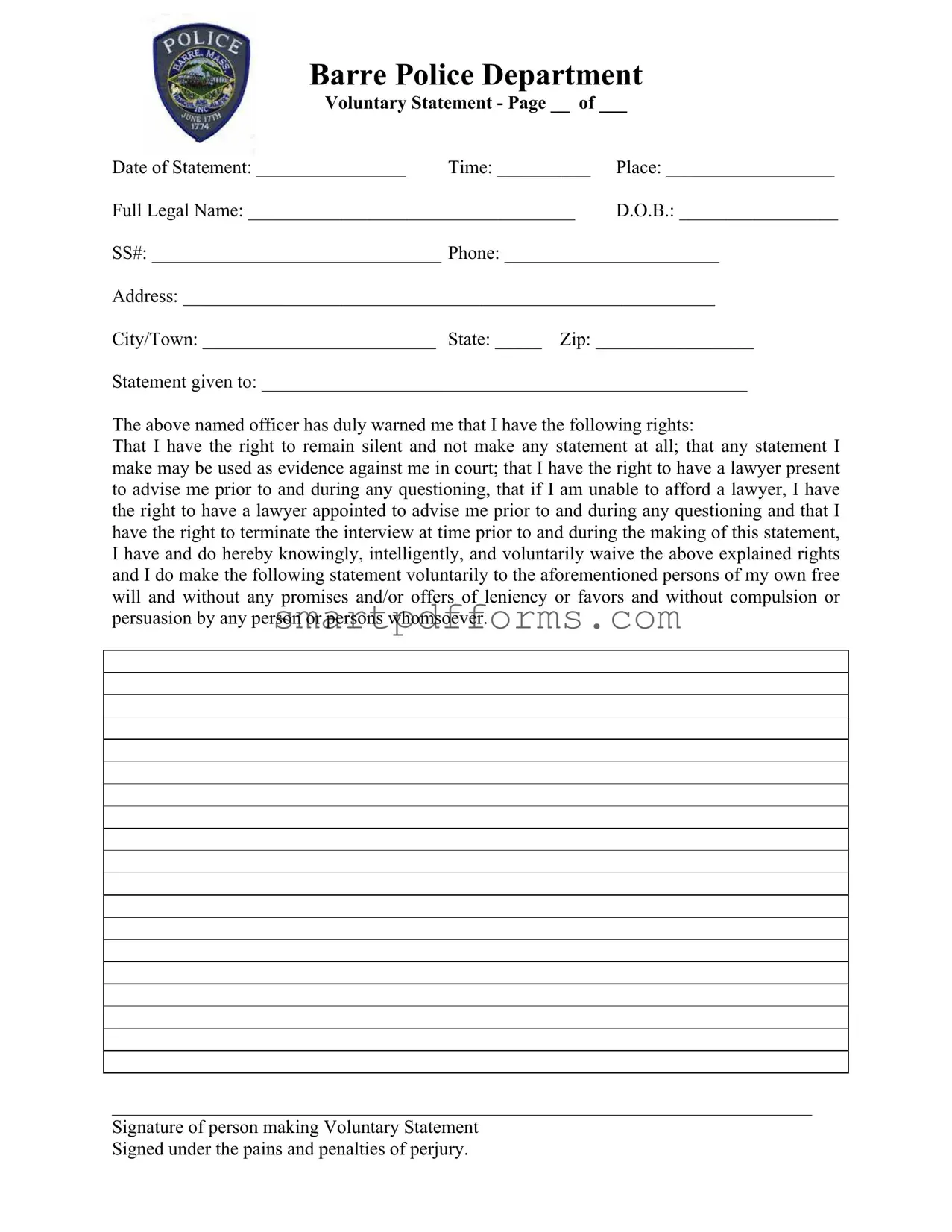The Police Statement form, particularly as exemplified by the Barre Police Department Voluntary Statement, serves a crucial function in the criminal justice process. This document meticulously records the details of a statement given voluntarily by an individual at a specific date, time, and place. The form captures essential information, including the individual's full legal name, date of birth, Social Security number, contact details, and residential address, thus ensuring accurate identity verification. Furthermore, it outlines the rights of the individual, highlighting the right to remain silent, the right to have legal counsel present during questioning, and the right to terminate the interview at any point. These rights are mentioned alongside an acknowledgment that any statement made can be used as evidence in court, emphasizing the legal gravity of the document. In addition, a segment dedicated to the waiver of these rights is included, requiring a signature from the individual, thereby indicating a voluntary and well-informed consent to provide the statement. This signature also attests that the statement is given without coercion, underlining the voluntary nature of the submission. The form is not only a record of the statement but also serves as a testament to the individual's understanding and waiving of rights, under the pains and penalties of perjury. Its structured format ensures all pertinent information and acknowledgments are systematically addressed, making it an indispensable tool for law enforcement in building a legal case while safeguarding individual rights.


